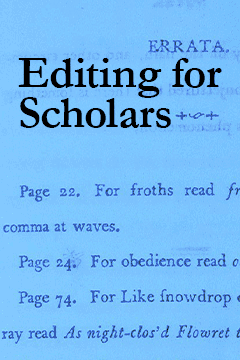What’s Left of Macondo?
What’s Left of Macondo?
Shaped by Latin America’s uneven and wildly unequal incorporation into the global market, Gabriel García Márquez’s literary project retains an eerie sense of foreboding today.

Beautiful levitating virgins, townspeople consigned to permanent forgetfulness, and children born with pig’s tails. These are but some of the images that have recurred in recent days to evoke the fictional universe created by the Colombian novelist Gabriel García Márquez, who died last week at the age of eighty-seven in Mexico City. Credited with pioneering a style known as magical realism, in which outsized events are told with poker-faced seriousness, he became, over the course of his career, the best-known Latin American writer of all time.
Readers, especially in Europe and the United States, have long been apt to see Macondo—the fictional town around which García Márquez constructed his literary edifice—as a “sleepy” and “exotic” backwater, a place where superstition rules and magic is “still” possible. In a word, Macondo is delightful because it is not yet modern, at least according to standard definitions. And yet for García Márquez’s characters, those prophecies and pig-tailed offspring are not the real instances of magic. Instead, it is often modernity itself, and particularly the forces of capitalism, that are presented as supernatural and inscrutable.
In One Hundred Years of Solitude (1967), for example, no one in the fictional town of Macondo bats an eye when Remedios the Beautiful levitates. But when the first train arrives, a woman is driven mad by the strangeness of a machine so loud that it sounds like “the kitchen dragging a village behind it.” The subsequent arrival of the banana enclave results first in wonder and then in growing inequality among macondinos. As García Márquez’s great epic of the Buendía clan progresses, the company grows in power to such a degree that it controls the weather. It also forms memory: after the massacre of striking workers, the company dictates that the event be forgotten. Then, without warning, the banana company leaves town, much as United Fruit left coastal Colombia in the mid-twentieth century, consigning Macondo to isolation, or—to use García Márquez’s favored term—solitude.
That the order of capital should be the ultimate source of magic in Garcia García Márquez’s fictions is not so surprising, especially since Macondo is itself a creation of the world market. García Márquez saw himself, too, as the product of a troubled modernity. The writer was born in 1927 in the town of Aracataca, Colombia, an enclave of the United Fruit Company. He understood his life as framed by the drama of the enclave, sometimes changing the year of his birth from 1927 to 1928 to coincide with the infamous massacre of striking United Fruit workers (the event that forms the climax of One Hundred Years of Solitude). The history of the United Fruit enclave is so central to García Márquez’s fictional universe that its very name “Macondo” is taken from the Bantu word meaning “banana.”
Coastal Colombia’s uneven and wildly unequal incorporation into the global market became a foundation of García Márquez’s literary project. In his 1955 novella The Leaf Storm—preceding One Hundred Years of Solitude by just over a decade—García Márquez provides a stirring description of the speed and implacable force with which the forces of capital arrive in what was once a sleepy town. “Suddenly, as if a whirlwind had set down roots in the center of the town, the banana company arrived, pursued by the leaf storm”:
In less than a year it sowed over the town the rubble of many catastrophes that had come before it, scattering its mixed cargo of rubbish in the streets. And all of a sudden that rubbish, in time to the mad and unpredicted rhythm of the storm, was being sorted out, individualized, until what had been a narrow street with a river at one end and a corral for the dead at the other was changed into a different and more complex town, created out of the rubbish of other towns.
The force that creates Macondo is organic, but not quite natural. From the perspective of the banana enclave, capital is enchanting. And this enchantment is by no means innocent.
Macondo is a literary creation born of Latin America’s long history of imperialism and exploitation by elites both domestic and foreign. And while certainly not the first to transform this exploitation into great literature—the poets Pablo Neruda, Nicolás Guillén, and César Vallejo are a few notable predecessors—García Márquez’s invention of Macondo coincided with the heroic age of anti-imperialism, decolonization, and revolution, not just in Latin America but around what was then called the third world. As Greg Grandin writes, García Márquez “took dependency theory (a social-science argument associated with the Latin American left that held that the prosperity of the First World depended on the impoverishment of the Third) and turned it into an art form.”
In one sense it is impossible to imagine Garcia Marquez telling his stories today, in a world marked by the defeat of third world revolutions and their utopias. The epic reach of One Hundred Years of Solitude—stoked to a large degree by the triumph of the Cuban Revolution in 1959—became unavailable to writers who lived through the subsequent counterrevolutionary periods marked by repressive dictatorial regimes and neoliberal austerity beginning in the 1970s. Meanwhile, the term used to describe the literary current García Márquez sparked—the Latin American “boom”—assimilated the writer himself into the narrative of inexorable capitalist modernization, by marking literature as the region’s latest export commodity.
For the generation of Latin American writers who followed García Márquez, his works often became a source of irritation (the Chilean novelist Roberto Bolaño, for example, famously said that magical realism “stinks”). “Macondo,” in turn, became shorthand for self-exoticizing stereotypes, formulaic hooks, and—for many—a suspicious penchant for totalizing narratives about Latin America.
So we might say that García Márquez’s works belong firmly to an age that has passed. Yet they remain incredibly prescient and relevant to our current age of austerity, precarity, and social abandonment. Indeed, some of his best-known storylines seem to acquire an eerie sense of foreboding here in the present, as if García Márquez were writing not just about banana enclaves in early-twentieth-century Colombia, but about a more pervasive logic of capitalism. Take, for example, the story of the dictator who, in order to pay his sovereign debt, sells the Caribbean Sea (The Autumn of the Patriarch). Or the story of the retired coronel who writes, to no avail, to claim a pension that never arrives (No One Writes to the Coronel). Or the story of the girl who, after incurring an astronomical debt to her grandmother, is forced into prostitution (“The Incredible and Sad Tale of Innocent Eréndira and Her Heartless Grandmother”).
The resonance of such stories should not be lost on us in times of ever-increasing exploitation and expropriation. We are still, to recall García Márquez’s description of Macondo, the products of catastrophes that have come before us; what remains is the task of transforming these shared histories into new collectivities and forms of expression. As the novelist put it in his acceptance speech for the Nobel Prize in Literature in 1982: “Solidarity with our dreams will not make us feel less alone, as long as it is not translated into concrete acts of legitimate support for all the peoples that assume the illusion of having a life of their own in the distribution of the world.”
Ericka Beckman teaches Latin American and comparative literature at the University of Illinois at Urbana-Champaign. She is the author of Capital Fictions: Writing Latin America’s Export Age (2013).




